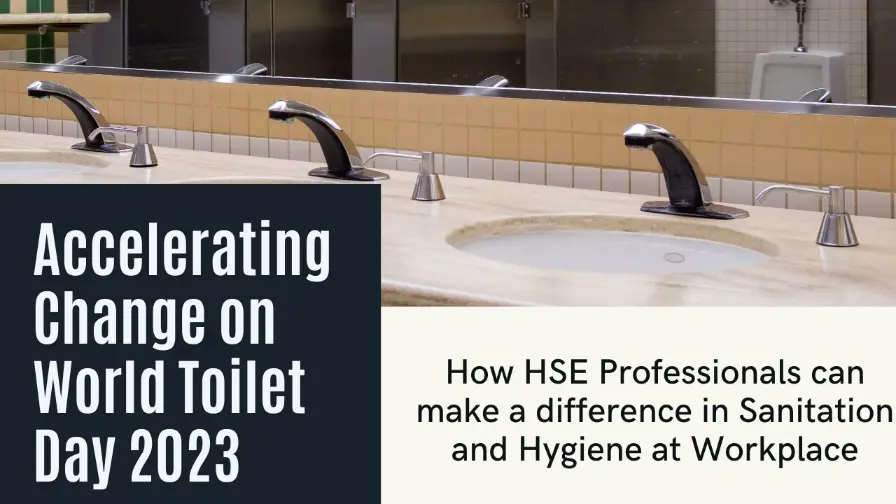Explore the diverse universe of HSE Audit essentials with our comprehensive guide. Whether you’re new to the field or seeking a refresher, this guide is your key to navigating the world of Health, Safety, and Environment audits with confidence.
1. Introduction of HSE Audits:
As an HSE professional, ensuring the health, safety and environmental well-being of our workforce and the surrounding community is paramount. A crucial tool in achieving this objective is the HSE Audit.
Explore the diverse universe of HSE audits with our comprehensive guide and series of blog posts. Whether you’re new to the field or seeking a refresher, this guide is your key to navigating the world of Health, Safety, and Environment audits with confidence.
2. What is an HSE Audit?
An HSE audit, short for Health, Safety and Environment audit, is a systematic and independent examination of an organization’s systems, policies, procedures and practices related to HSE.
Think of it as a health check or an X-ray of an organization’s HSE practices, identifying strengths, weaknesses, and areas for improvement.
3. Why are HSE Audits Important?
HSE audits are more than just ticking boxes. They offer a multitude of benefits and few of them are:
3.1 Reduced risk of accidents and incidents:
Audits proactively identify and address potential hazards, preventing accidents, injuries and illnesses. By proactively identifying hazards and system gaps as well as recommending necessary control measures; audits prevent injuries, illnesses and environmental damage, which results in saving lives and other associated costs ( fines, remediation expenses etc.)
3.2 Improved compliance:
Audits ensure the organisation adheres to legal requirements, relevant HSE regulations and standards, minimising legal risks and fines.
3.3 Enhanced safety culture:
A thorough audit fosters a culture of safety awareness and proactive risk management, leading to a more engaged and responsible workforce.
3.4 Boosted productivity:
A safer workplace translates to fewer accidents and disruptions, leading to increased productivity and efficiency.
3.5 Sustainable practices:
Audits promote environmentally responsible practices, minimizing organization’s impact on the planet.
3.6 Boost reputation:
Demonstrating a strong commitment to HSE through proactive audits enhances organisation’s brand image and attracts responsible investors and partners.
3.7 Continuous improvement:
Audits identify areas for improvement, allowing organisation’s to continuously refine their HSE practices and achieve operational excellence.
4. Types of HSE Audits: Finding the Right Fit
The world of HSE audits is diverse, catering to different needs and focusing on various aspects. Here’s a glimpse into some common types:
4.1 Compliance Audits:
These audits verify the adherence practices to specific regulations and standards, ensuring legal compliance.
4.2 Management System Audits:
They assess the effectiveness of an Organisation’s HSE management system, evaluating its implementation and suitability.
4.3 Program Audits:
These audits focus on specific HSE programs, like safety training or risk management, evaluating their effectiveness and identifying areas for improvement.
4.4 Workplace Safety Audits:
They delve into the physical workplace, identifying potential hazards and assessing the adequacy of safety controls.
4.5 Process Safety Audits:
These audits focus on high-risk processes, analyzing their potential for accidents and ensuring adequate safety measures are in place.
4.6 Environmental Audits:
They assess an organization’s environmental impact, identifying areas for improvement and ensuring compliance with environmental regulations.
There are even more in the list which will be covered in another article. To continue reading about Types of HSE Audit, click in the link:
5. Tips for Preparing for an HSE Audit:
Now that you understand the different types, here are some tips to ace your next audit:
- Familiarise yourself with relevant regulations and standards.
- Organise and document HSE policies and procedures.
- Conduct regular internal audits to identify and address potential issues.
- Involve employees in the audit process to gather valuable insights.
- Be open to feedback and recommendations from the auditor.
Remember, HSE audits are not meant to scare you; they’re there to help you create a safer, healthier and happier workplace for everyone. Embrace them as opportunities to learn, grow and build a safety culture that thrives!
Disclaimer: This blog post is intended for informational purposes only and should not be construed as professional advice. Always consult with qualified HSE professionals to ensure your practices meet the relevant regulations and standards.
For future updates, suggestion and discussion, please connect with us on Facebook, Twitter & Linkedin.






